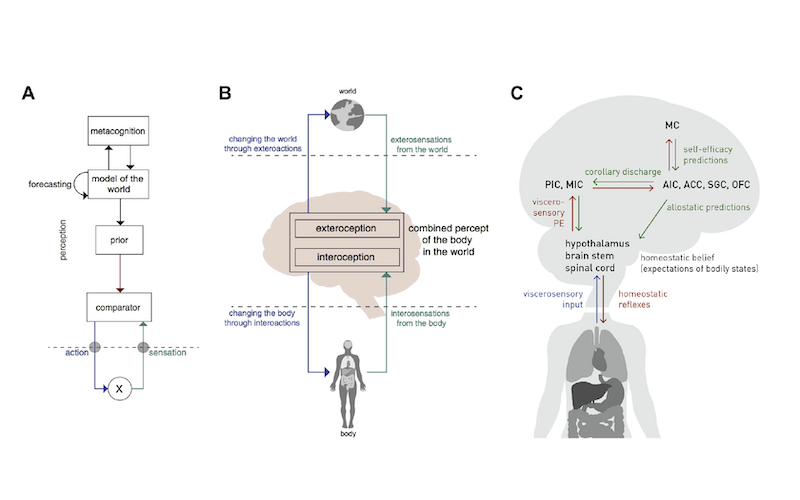
Homeostasis refers to the underlying (not conscious level) regulation of the our internal milieu. Homeostasis ensures that temperature, pH, fluid and electrolyte balance etc. are maintained within an optimal physiological range for proper functioning of the organism.
To achieve this the body generates and ceaselessly updates representations and communications about – the current biochemical and physiological state and needs of the organism.
This process is achieved through the integration of interoceptive information arising from free nerve endings embedded in the extracellular matrix (which permeate all tissues and organs). Sensation arising from nerve endings is transmitted to brainstem and midbrain nuclei and integrates with temporal and affective (conscious) areas of the brain.
This process is subject to feedback from multiple physiological systems including the autonomic nervous, endocrine and immune systems. It is also influenced by your state of mind.
This interplay contributes to affective tonality – the substrate which underpins our overall subjective sense of self and the state of the organism.
FEATURED IMAGE:
FH Petzschner. Computational psychosomatics and computational psychiatry: toward a joint framework for differential diagnosis (2017).
